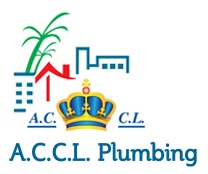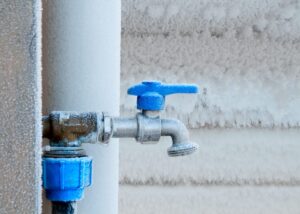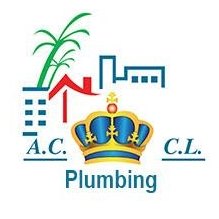Frozen Pipes: ACCL Plumbing
The opportunity to snuggle by the fire or ride in a one-horse open sleigh is enhanced by the cold weather. Unfortunately, when the weather becomes really cold, frozen pipes become a genuine threat. If your pipes have frozen, here’s what you should do.
Find out if your pipes are frozen
When you turn on a faucet full blast and barely a trickle comes out, this is the most evident indication. If this occurs when the outside temperature is much below freezing, it’s time to act! Ignoring frozen pipes could result in pipe bursts and expensive water damage.
Disconnect the main water supply
Turning off the main water line is the only way to stop water from gushing from a busted pipe. Even if the frozen pipe isn’t leaking, it’s a good idea to turn off the main water supply just in case.
Open a Faucet Using the Frozen Pipe’s Supply
This relieves pressure in the pipe and provides a path for water from the frozen section to flow after it has thawed.
Thaw a pipe that’s been hidden
You have three alternatives if the frozen pipe is behind a finished wall:
- Increase the temperature and wait for the ice to melt.
- To get to the pipe, you’ll need to tear down a part of the wall.
- To melt the pipe through the wall, use an infrared bulb.
Apply Heat to a Pipe That Is Exposed
It’s significantly easier to thaw an exposed pipe. Apply heat to slowly defrost the ice using one of these products, starting at the faucet side and working your way toward the frozen area:
- A blow dryer
- Heating lamp with infrared rays
- Electric space heater that is portable
- Electric blanket or heating pad
- Heat tape for electric pipes
- Towels that have been soaked in hot water
These equipment should never be used to melt frozen pipes:
- Kerosene Propane Blowtorch Heater
- Stove with charcoal
- Any other device with an open flame
Other Frozen Pipes to Look For
If one pipe freezes, others may follow suit. Turn the main water line back on and test all the faucets in your house to see whether any more frozen patches exist, as long as the newly thawed pipe hasn’t broken.
Frozen Pipes: How to Avoid Them in the Future
You can’t change the weather, but you can change how frigid temperatures affect your pipes. When the temperature drops, remember to follow this advice:
- Allow a few faucets to drip. Freezing is difficult to achieve with moving water.
- Even if you’re out of town, keep your thermostat at 55 degrees.
- Allow warm air to circulate around the pipes by opening under-sink cabinets.
- Electrical heat tape should be used to cover any exposed pipes.
- Foam insulation should be used to insulate susceptible pipelines.
- If pipes go through this area, close the garage door.
- To keep the temperature above 40 degrees in unconditioned places with pipes, use a space heater.
Do you require assistance in thawing frozen pipes?

Need help finding the source of your water heater problem? Or have any questions about how to fix it? Rely on our plumbing experts at ACCL Plumbing call us your today!
ACCL Plumbing offers repair and replacement services. We would be pleased to develop a guaranteed unique solution to keep your cleanouts, sewer blockages, clogged drains, burst pipes, broken water heater or over flowing toilets, free of any obstructions. We can help. Call 1(905) 448-5909 or visit our contact page to drop us a message http://acclplumbing.com/contact-us/




